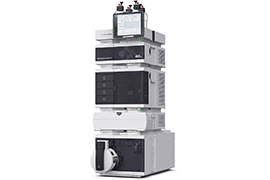Call us Now: +91 8447498882, +91 9811110632
Microbiological Analysis of Drug
Pharmaceutical Microbiology is an applied branch of Microbiology. It involves the study of microorganisms.
Ensuring the finished pharmaceutical product is sterile. Other aspects of pharmaceutical microbiology include the research and development of anti-infective agents, the use of microorganisms to detect mutagenic and carcinogenic activity in prospective drugs, and the use Drug safety is a major focus of pharmaceutical microbiology. Pathogenic bacteria, fungi (yeasts and moulds) and toxins produced by microorganisms are all possible contaminants of medicines- although stringent, regulated processes are in place to ensure the risk is minimal.
The test parameter done in drug microbiology are:
- Sterility
- Bacterial Endotoxin test
- Vitamin B12
- Antibiotic Assay
- Microbial Limit Count
- Total aerobic Count
- Total Fungal Count
- Total aerobic Count
- Total aerobic Count
- Total Fungal Count
- E.coli
- Salmonella
- S.aerues
- Pseudomonas aeruginosa
- Clostridium
- C. albicans
Microbiological Analysis in Food
Standard Analytical Laboratory Analytical division's Food and dietary supplements analysis laboratory is competent in performing advanced tests and analysis for pathogen testing (Aerobic Plate Count and Anaerobic Plate Count), routine quality control, shelf life analysis, minimum inhibitory concentration, water activity and water phase.microbiological safety and quality is vital for food processing and packaging companies.
Ours is an accredited full-service analytical testing contract laboratory for analyzing various food safety and food microbiology parameters. Our experienced and technically equipped microbiologists perform analyses applicable to every major food product.Microbiological sampling of the food industry products and environment is a prudent step and quality assurance.
The tests are performed for :
- Aerobic plate count (to indicate product quality)
- Campylobacter (poultry products)
- Clostridium botulinum (canned vegetables)
- Coliform E. coli (indicates product quality and safety)
- E. coli O:157 H:7 (ground beef and unpasteurized juice products)
- Lactobacillus (dressings and vacuum-packaged products)
- Listeria (meat, vegetables and dairy)
- Pseudomonas (fresh meat, poultry, and fish)
- Salmonella (meat, poultry, vegetables, and dairy products)
- Staphylococcus aureus (processed meat, and poultry)
- Vibrio (fish and seafood)
- Yeast and mold (sauces, dressings, beverages, and dairy products)
- Plate count of Shigella and several Bacillus specie
Besides the above mentioned analyses and testing, you can also engage our technological expertise for specialized analyses such as :
- Authentication of nutritional labeling of food products and dietary supplements
- Trans -fat analysis
- Trans -fat analysis
- Vitamins and minerals analysis
- Omega-3 fatty acids
- Food allergen detection
- Aflatoxins
- Acrylamide
- Trace metals and organics
- Identification of unknowns (using FTIR SEM-EDS technology)
- HACCP plan validation and verification
- ELISA for Vitamins and Mycotoxins
- Residual pesticides & antibiotic residues in food products
Microbiological Analysis in water
- Aerobic Plate Count
- Yeast & Mould
- E. coli
- Coliform
- S. aureus
- Vibrio Para
- Vibrio Para
- Salmonella
- Shigella
- Feacal Streptococci
- Pseudomonas aeruginosa
- Sulphite reducing anaerobes (clostridia)
Microbiological Analysis in Cosmetic
- Total Microbial Count
- TotalYeast of mould Count
- E. coli
- S. aureus
- Pseudomonas aeruginosa
- Candida albicans








